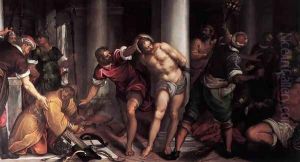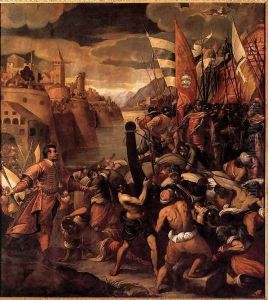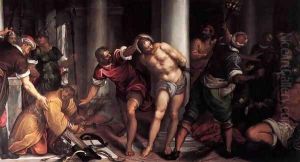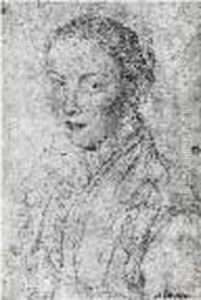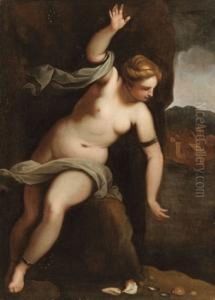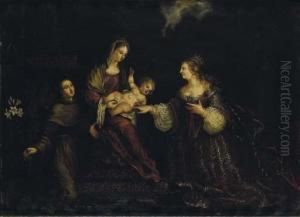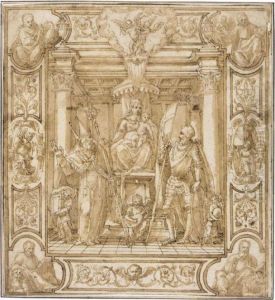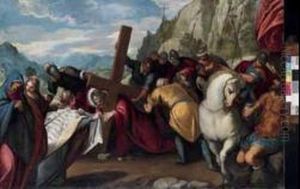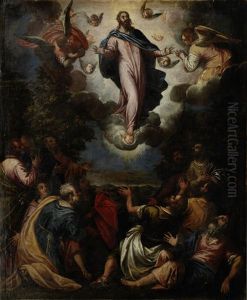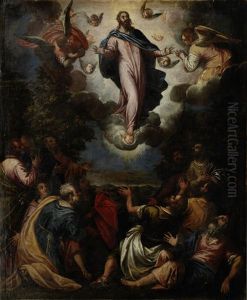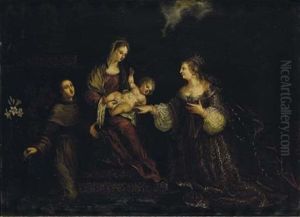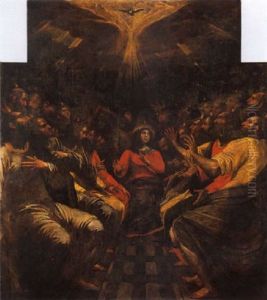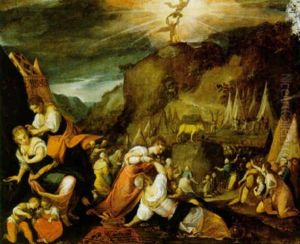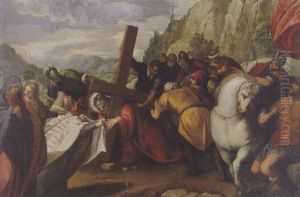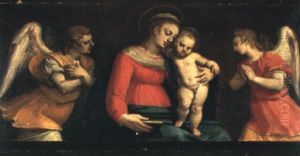Antonio da Vassilacchi Paintings
Antonio da Vassilacchi, also known as L'Aliense, was an Italian painter of the late Renaissance period, celebrated for his work during the Venetian school's golden age. Born in 1556 in Milos, an island in the Aegean Sea, which was then part of the Republic of Venice, he relocated to Venice at a young age. His nickname, 'L'Aliense,' is derived from his place of origin ('Aliense' meaning 'from Aliens' or 'from elsewhere').
Vassilacchi's artistic journey began under the guidance of Paolo Veronese, a master of the Venetian Renaissance. Working in Veronese's workshop, he honed his craft and was significantly influenced by his mentor's style, which is evident in his use of color and compositional arrangements. After Veronese's death, Vassilacchi started to collaborate with other prominent artists of the time, such as Palma il Giovane and Jacopo Bassano.
During his successful career, Antonio was commissioned to work on various important projects, including decorations for the Doge's Palace and other prominent Venetian churches and buildings. One of his notable works is the decoration of the Sala del Maggior Consiglio in the Doge's Palace, where he contributed alongside other artists after a fire had damaged the building in 1577. His work often reflected the transition from Mannerism to the more naturalistic Baroque style that was gaining popularity at the time.
Vassilacchi was also known for his work in the Scuola Grande di San Rocco and the church of San Giorgio Maggiore, where his artistic prowess can be observed in the grand narratives and the dynamic compositions of his paintings. He was admired for his ability to depict scenes from the Bible and mythology with a dramatic and vivid imagination.
Antonio da Vassilacchi passed away in 1629, leaving behind a legacy that contributed to the richness of the Venetian artistic heritage. His works continue to be studied and appreciated for their historical significance and artistic merit, representing an integral part of the late Renaissance and early Baroque periods in Venice.
